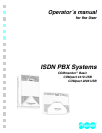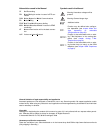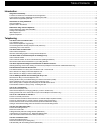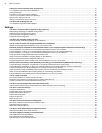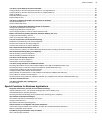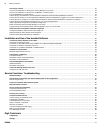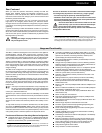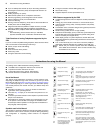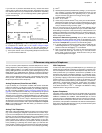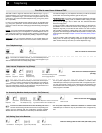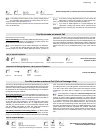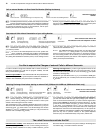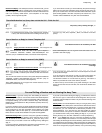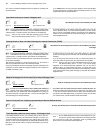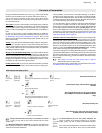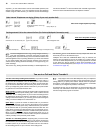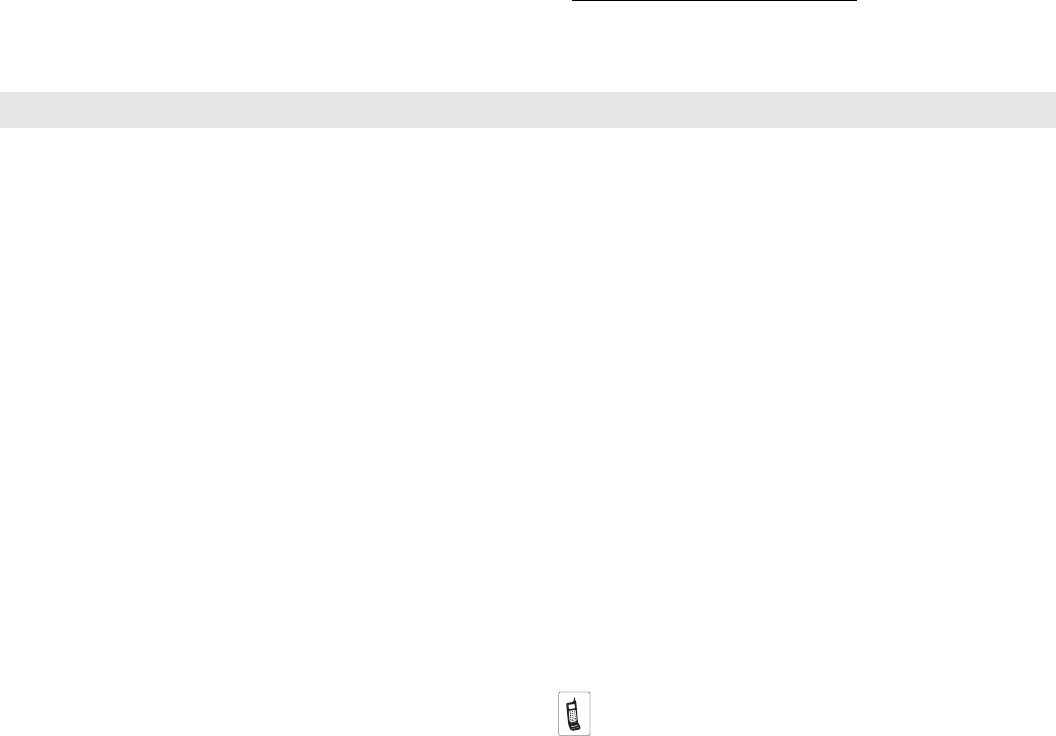
8 Instructions for using the Manual
˾ Up to 57.600 bps data transfer (V.90) on the analog extensions.
˾ Exchange line reservation, pickup and explicit call transfer to an
external phone.
˾ Dialling support by PC (TAPI).
˾ PBX software update via PC or telephone connection.
˾ Remote programming via exchange line from the outside.
˾ Internet Telephony (VoIP) via Auerswald Box
˾ Least Cost Routing
˾ Routing of Internet Telephony (VoIP) calls via Auerswald Box and
mobile phone calls via GSM gateway
˾ Integrated data interface (ISDN PC adapter functions) via USB
interface (COMpact 2206 USB and COMpact 4410 USB only).
˾ NDIS-WAN-driver (COMpact 2206 USB and COMpact 4410 USB
only) for
- channel bundling, internet access with up to 128 kBit/s,
- dynamic bandwidth use in combination with Windows 2000.
T-Net-Functions of analog Telephones supported by the
PBX
If you use a T-Net compatible analog telephone, these functions will be
able to be executed via the existing function keys.
˾ Permit, accept, refuse Call Waiting.
˾ Alternation.
˾ Start conference with 3 persons.
˾ Start Query, finish.
˾ Configure Subscriber Call Forwarding.
˾ Configure connection without dialling (baby call).
˾ Start recall on busy.
˾ Suppress telephone number presentation once.
ISDN Features supported by the PBX
˾ Conditional suppression of the own telephone number presentation
(CLIR).
˾ Parking (TP) on the PTMP connection or on the internal S
0
port.
˾ Call Forwarding on busy (CFB), if nobody takes the call (CFNR),
always (CFU).
˾ Transmission of the connection charges during (AOCD) and at the
end (AOCE) of the connection.
˾ Recall on busy (CCBS) and on no reply (CCNR).
˾ Telephone number display (CLIP) on SD-420, system telephones,
internal ISDN units and analog telephones (special analog termi-
nals are necessary that support CLIP).
˾ Name display (CNIP) on system telephones, internal ISDN units
and analog telephones (special analog terminals are necessary that
support CNIP)
1
˾ X.31 on the internal S
0
port or X.25 in the D channel (COMpact
2206 USB, COMpact 4406 DSL and COMpact 4410 USB only)
Please ask your network operator about the availability of
some ISDN service attributes. Some of these functions may
be available for an extra fee.
The package of the PBX includes the following manuals:
˾ 1 installation and configuration manual for the service and
˾ 1 operation instruction manual for the user.
˾ 1 CAPI/TAPI manual (Fax, Internet, Data transfer)
This manual describes in all details the use of the PBX.
Use of the Manual
This manual sorts explanations according to certain question types.
Supposing the telephone rings in the room next to you and you would
like to take the call, the chapter You like to react to an inbound Call on
page 10 will surely help you. In order to get certain information quickly
and carefully directed, the manual will offer you different helps and
guide lines:
˾ The table of contents on p. 3 gives you an idea of content and
organization of the operating manual.
˾ The index on p. 72 helps you to find certain text portions for a cer-
tain term.
˾ In the texts you will be referred to other chapters or pictures with the
help of cross references.
˾ The headlines on each page remind you in which chapter you are
at the present. On the left side of the pages the headlines of the
actual chapter will be repeated. On the right side the headlines of
the paragraph will be repeated.
Symbols used in this Manual
The symbols or pictograms displayed in the following table are used in
this manual in order to show common procedures during telephoning
and configuration or requesting certain functions via telephone
(enquiry).
1 depending on support by the network provider
☞
Instructions for using the Manual
a
Hang up the receiver.
b
Pick up the receiver.
c
A telephone is ringing.
f
You are hearing a tone, described in the
corresponding chapter in more detail.
d
Put the receiver next to the
telephone.
g
Make a call.
If you start the call yourself, you will hear the
ringing tone (ringback tone) for some time.
Y
The door bell is ringing.
r
Dial external numbers or numbers that are
to be dialled via exchange line.
k
Dial Short-Code Dialling
number.
M
Dial one of your own external telephone
numbers.
G
Dial telephone number of
the internal group.
n
Dial internal telephone number or sub-
scriber’s telephone number.
t
Dial number of the door ter-
minal.
O
Dial password, e.g. secret password:
Default factory setting 1111, after entering
the password correctly you hear an
acknowledgement tone.
p
Dial 2- to 6-digit project
number.
S
Switch on/off function (1: switch on, 0:
switch off).
K
Dial number of the door bell
key.
U
Dial time with 4-digits: 00-23 (hours),
00-59 (minutes).
R
Dial number of the relay.
i
Dial number within the indicated range. (in
this case numbers from 0000 to 9998).
Press the hook key on the
handset.
*
Press star key (cancels a programming or
disconnects a Direct Exchange Line Tele-
phone from the exchange line)
1
Dial a fixed digit (e.g. 1).
F
Query with FLASH key (in case of DTMF
telephone) or Query key or menu selection
(in case of an ISDN telephone, see manual
of this telephone). Ignore in case of a pulse
dial telephone.
#
Press hash key (e.g. at the
end of a programming func-
tion, you will then hear an
acknowledgement tone).



